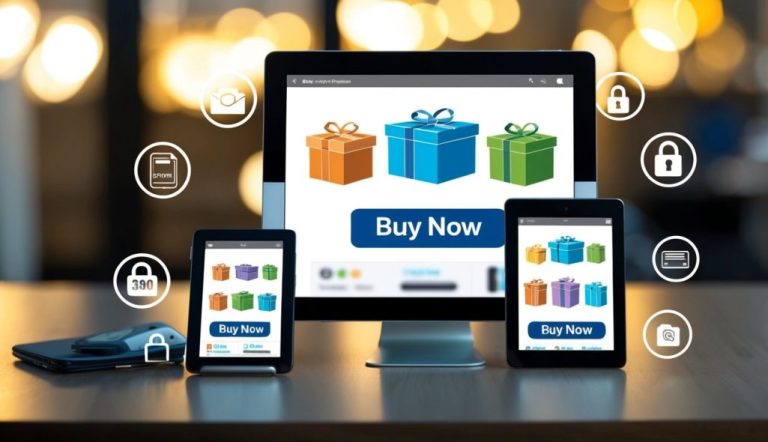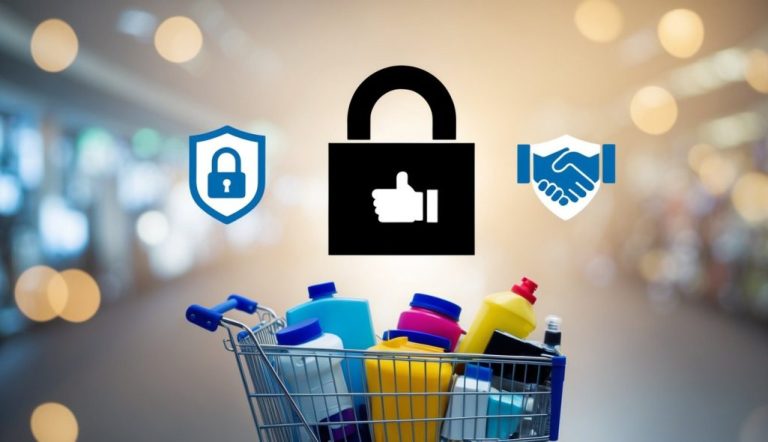Instagram has become an essential tool for online stores looking to boost their presence and increase sales. With its visual-first platform and a massive user base, businesses can reach a wide audience by using creative content and engaging storytelling. By effectively utilizing Instagram marketing strategies, your online store can enhance brand awareness and drive significant online traffic.

Creating a successful Instagram strategy involves setting up a storefront that represents your brand and showcases your products. Focus on crafting engaging posts, stories, and reels that resonate with your target audience. With features like Instagram Shopping, users can easily browse and purchase directly from your posts, streamlining the customer journey.
Influencer marketing and paid promotions can also help expand your reach and attract more customers. Monitoring and analyzing your content’s performance will further optimize your strategy, ensuring long-term growth and success.
Key Takeaways
- Optimizing content boosts brand awareness and traffic
- Instagram Shopping simplifies the purchasing process
- Influencer partnerships and promotions expand reach
Understanding Instagram as a Marketing Platform
Instagram has become a vital tool for businesses aiming to enhance their online presence. The platform offers unique features tailored to businesses, making it distinct from other social media platforms. By optimizing your Instagram profile, you can better reach your audience and boost sales.
The Evolution of Instagram for Businesses
Instagram started as a simple photo-sharing app but has transformed significantly. Today, businesses use it for marketing due to its visual-centric format, which is ideal for showcasing products. Features like Instagram Stories, IGTV, and Reels help businesses share engaging content creatively.
Business accounts offer analytics tools to track engagement, audience insights, and content performance. These features have been crucial for businesses to develop effective Instagram strategies.
Instagram Vs. Facebook for Ecommerce
Both Instagram and Facebook offer powerful tools for ecommerce, but they serve different purposes. Instagram is more visually driven, making it perfect for displaying products and building brand aesthetics. Facebook, however, provides robust tools for detailed audience targeting and customer interaction.
Instagram excels in influencer marketing and reaching younger audiences. Facebook offers comprehensive advertising options and integrated shopping features, which can drive direct sales. Deciding which platform to prioritize depends on your business goals and customer base.
Types of Instagram Business Accounts
Instagram offers different types of business accounts: Business and Creator. A Business account suits companies wanting to access advanced features like ads and insights. It helps track follower growth and engagement rates, which is crucial for measuring success.
A Creator account is ideal for public figures and influencers. It provides insights tailored for personal brands, such as growth metrics and collaboration tools. Both account types support features like Instagram Shopping, enhancing ecommerce capabilities.
Optimizing your account type ensures you utilize Instagram’s tools effectively, fitting your marketing strategy and business needs.
Setting Up Your Instagram Storefront
To make your Instagram shop successful, think about how your profile looks and operates. Your bio, business profile, and shopping features are all important. Set them up well to attract and keep customers.
Crafting an Effective Instagram Bio
Your Instagram bio is the first glimpse people have of your online store. It’s essential to make it count. Clearly showcase your brand’s identity and what you offer. Use concise, engaging language and incorporate relevant emojis if appropriate.
Include your store’s unique selling point and a direct call to action, such as “Shop Now” or “Explore Our Collection.” A link to your storefront or website is key. Use an all-in-one link tool if you need to include multiple destinations.
Align your bio tone with your brand’s voice. This helps set the right expectation for what customers will find in your Instagram shop.
Optimizing Your Business Profile
Your business profile is the base of your Instagram shop. Make sure it’s set up properly to make a lasting impression. Convert your personal account to a business profile for access to additional tools and insights.
Choose a profile picture that represents your brand well, preferably your logo. Keep your contact information current. Use Instagram’s contact options to let followers easily get in touch with you by phone or email.
Select an appropriate category for your business, making it easier for users to find your Instagram shop. Implement consistent branding across your posts to maintain a cohesive look.
Integrating Instagram Shopping Features
Instagram Shopping features allow customers to buy directly from your posts. First, make sure your account is eligible and set up properly. Link your product catalog with your profile through the Commerce Manager.
Tag products in your photos and stories to create a seamless shopping experience. Enable the “Checkout on Instagram” feature, letting users purchase without leaving Instagram. This can greatly enhance sales conversion rates.
Use Instagram Live to engage viewers and showcase your products in action. Allow users to shop directly from the live video. Store your live videos so followers can browse and purchase products later.
Creating a Cohesive Instagram Content Strategy
When crafting an effective Instagram content strategy, it’s crucial to plan your posts with a clear schedule, make the most of Instagram Stories and Reels, and foster community engagement through user-generated content.
Devising a Content Calendar
A well-structured content calendar is essential for maintaining consistency. You should map out your posts to align with your marketing goals, considering key dates and promotional periods.
Tip: Use tools like Google Calendar or apps designed specifically for social media planning. This keeps you organized and ensures your content is timely.
A balanced mix of content types, such as photos, videos, and Stories, is key to keeping your audience engaged. Schedule regular updates to maintain a steady presence and avoid overwhelming your followers with too much information at once.
Leveraging Instagram Stories and Reels
Instagram Stories and Reels are excellent for boosting engagement due to their interactive nature. With over one billion monthly active users, these features offer creative ways to engage with your audience.
Add elements like polls and question stickers to your Stories for more user interaction. Reels, being short and entertaining, are ideal for showcasing quick product demonstrations or sharing customer testimonials.
Pro Tip: Reels can extend your reach beyond your followers by appearing in the Explore tab, so focus on making content that appeals to a wider audience.
User-Generated Content and Community Building
User-generated content (UGC) can enrich your Instagram presence by showcasing genuine customer experiences. Encourage customers to share photos or reviews featuring your products.
You can create a branded hashtag, making it easier to find and share UGC. Recognizing and reposting UGC can foster a sense of community, leading to increased brand loyalty and engagement.
Building a community is about interaction. Engage with users who mention your brand, and respond to comments. This creates an approachable and friendly brand image, encouraging more followers to participate and share their content.
Maximizing Product Discovery and Sales
In today’s digital landscape, Instagram serves as a pivotal platform to enhance product visibility and drive sales. This section explores effective ways to utilize features like product tags, Instagram Checkout, and strategies to convert engagement into purchases.
Utilizing Product Tags and Collections
Product tags play a crucial role in making your products more discoverable. By embedding these tags in your posts, you allow users to see a product’s name, price, and description at a glance. Use collections to group similar items, which helps in organizing your offerings efficiently.
Creative use of tags and collections in your Shoppable Instagram Feed can lead to a seamless shopping experience. Ensure that each tagged post leads directly to a purchase page, minimizing clicks needed for a sale. This ease of access can significantly improve sales figures and customer satisfaction.
The Role of Instagram Checkout
Instagram Checkout allows users to purchase directly within the app. This feature streamlines the buying process, reducing the friction often caused by redirecting to external sites. By keeping everything within Instagram, you maintain engagement and convenience.
To set up Checkout, connect your online store with Instagram’s shopping tools. This allows followers to purchase without leaving the app, which is key to converting browsers into buyers. It’s a valuable tool in maximizing your conversion rate as customers enjoy a smooth shopping experience.
Transforming Engagement into Purchasing Decisions
Transforming engagement into sales involves leveraging shoppable posts. These posts should creatively display products while encouraging interaction with clear calls-to-action. Engaging visuals paired with strategic captions can drive users to explore your Instagram Shop.
Focus on building trust with followers by consistently featuring customer testimonials or user-generated content. This can make purchasing decisions easier for potential buyers. By creating an authentic connection with your audience, you increase the likelihood that engagement will translate into transactions on Instagram.
Instagram Advertising and Promotions
Instagram advertising is a powerful tool for growing online stores. By using different types of ads, running exciting contests, and crafting sponsored posts, you can boost your brand awareness and engage potential customers more effectively.
Different Types of Instagram Ads
Instagram offers various ad formats to help you reach your audience. Photo ads are great for featuring eye-catching images of your products. Video ads allow you to share short clips that can showcase how your product works or tell a compelling story. If you want to display multiple images or videos in a single post, consider using carousel ads, which let users swipe through several visuals. For a more direct shopping experience, shopping ads enable users to purchase directly by tapping on your tagged products. Effective Instagram ads can create strong connections with your audience.
Running Contests and Giveaways
Running an Instagram contest or giveaway can significantly boost your marketing efforts. You can encourage users to engage by liking, sharing, or commenting on your posts. Offering prizes that relate to your brand will attract potential customers interested in your products. This strategy not only increases activity on your page but also expands your reach and brand awareness. Be clear about the rules and ensure that the contest aligns with Instagram’s guidelines. Contests are a great way to create excitement around your brand.
Effective Use of Sponsored Posts and Ads
Sponsored posts and ads can help you reach a broader audience. By paying to promote your posts, you can target specific demographics that match your ideal customer profile. This targeted approach increases the chances of reaching users who are more likely to be interested in your products. Sponsored posts should feature high-quality content that resonates with your audience. Use clear calls-to-action to guide potential customers toward your website or product landing page. Creating effective Instagram ads will enhance your overall marketing strategy.
Leveraging Influencer Marketing on Instagram
Instagram influencer marketing can greatly boost your brand by partnering with influencers and micro-influencers. These strategies can enhance your brand’s visibility, engagement, and sales. Understanding the value of influencer types and how to measure campaign success can help your online store thrive.
Partnerships with Instagram Influencers
Building partnerships with Instagram influencers allows your brand to reach a wide audience. These influencers have large followings and can create appealing content that highlights your products. Collaborate by creating sponsored posts, photo campaigns, or video content. Always ensure the influencer’s audience matches your target market. This alignment ensures higher engagement rates, meaning more likes, comments, and shares on your business page.
Consider providing influencers with a unique discount code or link. This can track their contribution to sales and incentivizes their followers to purchase. Choose influencers based on their past performance metrics such as engagement rate and audience demographics. Trust and authenticity are key; your partnership should feel genuine to their followers.
Engaging with Micro-Influencers
Micro-influencers typically have smaller but more engaged followers. These influencers can be more affordable and accessible than celebrities. Micro-influencers are highly effective due to their closer relationships with their audiences, often resulting in a higher engagement rate. Partner with multiple micro-influencers to spread your brand message widely yet effectively.
When selecting micro-influencers, check their niche relevancy, engagement statistics, and content quality. They should align with your brand’s identity and voice. Collaborations may include giveaways, unboxing videos, or feedback posts. Their followers trust their opinions, which means they might be more likely to engage with your brand. Working with micro-influencers often brings creativity and new perspectives to your marketing efforts.
Measuring the Impact of Influencer Collaborations
It’s vital to measure the success of your influencer collaborations. You should track key performance indicators (KPIs) such as engagement rate, referral traffic, and conversion rate. Use marketing automation tools to help analyze these metrics effectively.
Focus on understanding how influencers drive traffic to your site and the resulting sales. Accurate tracking helps refine future campaigns. Tools like UTM parameters can gauge which influencers generate the most interest and conversions. Additionally, sending out post-campaign surveys can provide qualitative insights into consumer perceptions. Evaluating these metrics enables you to adjust strategies for better outcomes in future campaigns.
Tracking and Analyzing Instagram Metrics
Effectively tracking and analyzing Instagram metrics is crucial for boosting your online store’s performance. By understanding these key metrics, you can refine your e-commerce strategy, gain valuable audience insights, and ultimately drive conversions to attract new customers.
Understanding Instagram Analytics
Instagram analytics provide a wealth of data to help optimize your digital marketing efforts. Key metrics like engagement rate, which measures interactions like likes and comments against your follower count, are essential for evaluating content effectiveness. Follower growth rate is another important metric that indicates how well your content attracts new followers. Use these metrics to identify which types of posts encourage the most interaction and help you sharpen your e-commerce marketing strategy.
Gaining Insights from Audience Data
Audience insights are vital for tailoring your marketing approach to your customers’ preferences. Use tools to examine demographic data such as age, location, and gender, to better understand who interacts with your brand. Not all followers engage at the same level, so monitoring which segments are most active can inform content creation. This helps you target your marketing efforts more precisely, leading to higher conversions and more successful marketing campaigns.
Adjusting Strategies Based on Performance
Once you’ve collected and reviewed your Instagram analytics, the next step is to adjust your strategies based on these insights. If a particular post format or subject consistently garners high engagement rates, consider incorporating more of that content into your schedule. Conversely, if certain approaches don’t yield desired results, explore alternatives that align more closely with audience preferences. By continuously refining your approach, you can improve your e-commerce strategy and enhance customer engagement.
Building a Sustainable Ecommerce Marketing Plan
Crafting a sustainable ecommerce marketing plan is crucial for long-term success. Focus on aligning your Instagram efforts with your business goals, developing a detailed content plan, and building lasting customer relationships.
Aligning Instagram Efforts with Business Goals
To make the most of Instagram ecommerce marketing, align your online activities with your broader business goals. Start by clearly defining what you want to achieve, whether it’s increasing sales, enhancing brand recognition, or engaging a specific audience.
Ensure your Instagram content reflects your brand story and mission. For instance, if sustainability is a key aspect, highlight eco-friendly practices. This approach not only drives sales but also reinforces your brand values. Utilizing features like Instagram Shops will help you easily showcase products and align actions with business objectives.
Developing a Long-Term Content Plan
A strategic content plan is vital for sustainable social media marketing. Create a schedule that includes a mix of posts, stories, and reels, focusing on quality and consistency. Use a combination of engaging visuals, user-generated content, and informative captions to keep your audience engaged.
Think about the timing and frequency of your posts to maximize visibility and interaction. Maintaining a long-term approach allows you to adapt to evolving trends while staying true to your brand identity. By planning ahead, you can ensure that your content remains relevant and aligned with your goals over time.
Fostering Meaningful Relationships with Customers
Building relationships is at the heart of successful ecommerce marketing. Interacting with your audience through comments, direct messages, and live sessions can build trust and loyalty. Personalize your communication and encourage feedback to make your customers feel valued.
Highlight customer stories or testimonials to strengthen these connections. This not only boosts engagement but also acts as social proof, drawing in new customers. By fostering a community around your brand, you create more than just customers; you build advocates who can help sustain your business in the long run.
Frequently Asked Questions
In this section, you will find insights into promoting an online store on Instagram, understanding Instagram Shopping, optimizing marketing campaigns, and effectively utilizing shopping features. These questions are crucial for leveraging Instagram’s potential in e-commerce.
What are the best tactics to promote an online store on Instagram?
To effectively promote your online store, focus on creating engaging content that resonates with your audience. Use visually appealing images and videos to showcase your products. Engage with your followers through interactive posts like polls and questions. Consider using Instagram for business features to reach a wider audience.
How can you get approved for Instagram Shopping?
Getting approved for Instagram Shopping requires meeting certain criteria. Your business must comply with Instagram’s policies and guidelines. You need to have a valid domain where you intend to sell your products. Setting up Instagram Shopping involves linking your account with a product catalog, which can be managed through Facebook Business Manager. You can find more details on how to use Instagram Shopping.
What strategies should be used to optimize an Instagram marketing campaign for e-commerce?
To optimize your marketing campaign, tailor your strategy to suit your specific audience. Use analytics to track which types of posts perform best and adjust your content accordingly. Utilize Instagram Stories and Reels to keep your audience engaged with fresh and diverse content. It’s also important to collaborate with influencers who align with your brand.
How can online stores effectively utilize Instagram Shopping features?
Online stores can make the most of Instagram Shopping by tagging products directly in posts, making it easier for users to purchase without leaving the app. Regularly update your product catalog to ensure accuracy. Use Instagram Live to showcase new products and answer customer inquiries in real-time. This approach can drive engagement and sales.
In what ways can Instagram Shopping apps enhance online retail marketing?
Instagram Shopping apps can streamline the purchase process by providing customers with a seamless shopping experience. By integrating these apps, you can offer features such as product previews, detailed descriptions, and quick checkout options. Apps like these cater to mobile shoppers and can increase conversion rates for your store.
What are the key steps for beginners to start with Instagram marketing for their e-commerce business?
The first step for beginners is to set up a business account. This gives you access to Instagram Insights, which helps you understand your audience. Create a content calendar to plan posts ahead of time. This ensures a consistent presence on the platform. Focus on building a community by engaging with followers and responding to comments and messages.





